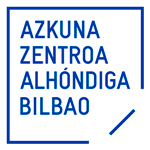
Barcelona, 1964. He is an art historian, PhD in Cultural Studies, curator of exhibitions, audio visual filmmaker, tenured professor at BAU University Centre of Design of Barcelona and a member of the research group GREDITS.
At the end of the 80s he designed numerous national and international research projects, in exhibition format, audio-visual or editorial, often to do with the politics of image. The most recent are: Actuar en la emergencia. Repensar la agencia del diseño durante (y después) de la COVID-19 (Taking action in times of emergency. Reconsidering the design agency throughout (and after) COVID-19, RAER, GREDITS, BAU, UNIKORE, AASD, Università Federico II, Hangar, ISIA, 2021-2023); Las videntes. Imágenes en la era de la predicción (The psychics. Images in the era of prediction. Arcadia, 2021); Fantasma’77. Iconoclastia española (Ghost’77. Spanish iconoclasm. Tecla Sala, Roca Umbert, Centre del Carme, Casal Solleric, 2020; with Matteo Guidi and Rebecca Mutell); Iconografía post-millenial (Post-millenial iconography. Morsa, 2019); La competencia de lo falso. Una historia del fake (The competition of the false. A story of the fake. Cátedra, 2018); Espectros (Spectres. Virreina, 2017); Fake. No es verdad, no es mentira (Fake. It’s not true, it’s not a lie. IVAM, 2016); Interface Politics (BAU, 2016, 2018); Arte en España (Art in Spain. 1939-2015). Ideas, prácticas, políticas (Ideas, policies, politics. Cátedra, 2015; con Patricia Mayayo).
Share:
In the wake of a series of previous works dedicated to Artificial Intelligence and its impact on specific imaginaries and linguistic social orders, the motive for the residency was to create a book that would trace a genealogy of the current mathematical regime of predictions. The objective consisted in exposing the motor that has allowed the machines to dominate the language of the oracles and judge everything existing, especially human behaviour, as well as the fact that the algorithms of the machines are very quickly learning to see images, to write them and in so doing, to predict the world almost exclusively through them. My perspective is that of an art historian, which implies a unique view, given that we no longer only deal with artistic images, but now we deal with all images. The project intended, well, to see the role of these images, artistic as well as scientific, over the course of this process, analysing by using certain tricks of the trade to illuminate historic nodes through which, little by little, the predictive truth got entangled, the only way to describe the world obsessed with knowing everything and cancelling any form of doubt or serendipity. The result of the grant was the book Las videntes. Imágenes en la era de la predicción (The psychics. Images in the era of prediction), published by the editorial Arcadia, in Barcelona, March 2021.
The idea was to draft a book – in part, encouraged by the offer of an editorial – in which to trace a genealogy of the function of the images in the sciences dedicated to predictions. The reason for coming to Rome was to explore, through documentation, some parts of this process. From the Renaissance to the beginnings of the 20th century, a grand part of the Italian intelligentsia was influenced by physiognomic classical theories, that judged the personality through anatomic features, adapting a type of representation of the emotions and gestures that would end up being adapted by the emerging “social physique” of the 19th century. The criminal and psychiatric panthropometry and anthropology set the basis to augur human behaviour, from the morphological study and comparison, and the intensive use of the new means of photography. Today we refer to these techniques as biometrics, and they constitute the direction of the current predictive regime.
The confinement due to the pandemic truncated all of the consults, and it was necessary to use the online archive. The technical consultations with engineers and software artists were carried out via internet without any major setbacks. The rest of the plan went down the drain. The only thing left to do was to sit down and write, in a garden full of little birds, livened by aerobic sessions (that we called Bella Gamba, magnificently choreographed by Ana Bustelo and Joserra Ais), outings to the supermarket and shots of tequila. On the 16th of April I wrote the last line of 176 pages. On the 15th of May I was able to find a triangulated flight that returned me to Barcelona. On the 1st of September I handed in the final draft of the manuscript to the editorial.
I arrived at the Academy to work for three months, I entered on the first of February and the last day was in April. The 4th of March everything closed, and we were confined to the premises, a kind of golden cage. One day a Kinder sorpresa (a chocolate egg with a surprise in it) appeared in the locker of each of us. Someone had left it there to liven us up. I never knew who. I didn’t ask much either. Within mine there was a little children’s figurine of green plastic with a winged red helmet that could be taken off and put on and served as a ski mask. It was a girl with huge eyes, smiling with her arms up. I called her Wilson, in memory of the ball that accompanied a shipwrecked person in a movie, and I put her on the bedside table. Terrible images and news took place every day. One night, Wilson spoke to me in a dream like a Sybil: “Be careful with the classical categories of this damned city”.
